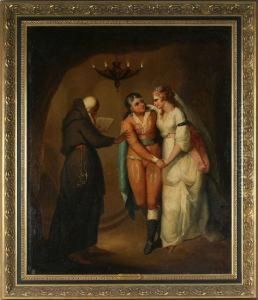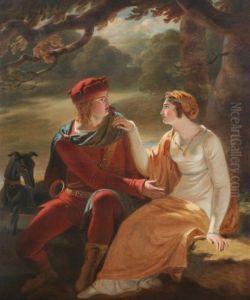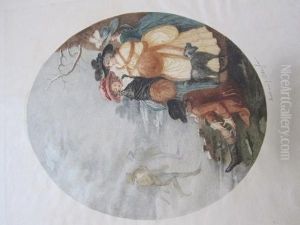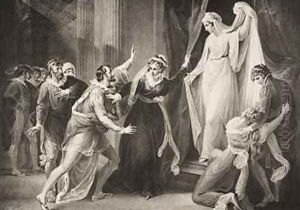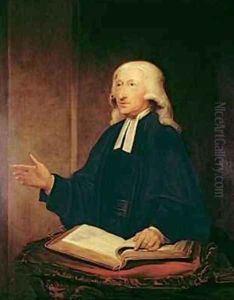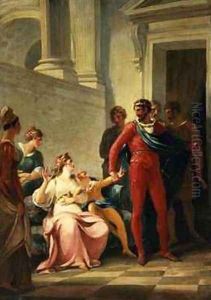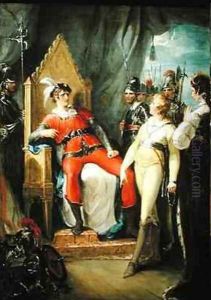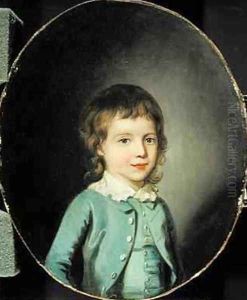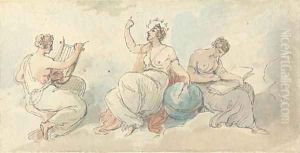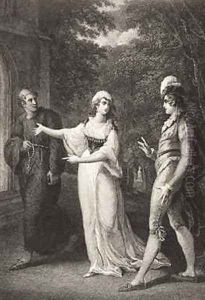William Hamilton Paintings
William Hamilton was a British diplomat, antiquarian, archaeologist, and vulcanologist, born on December 13, 1751, in London, England. He is best known for his diplomatic service as the British Ambassador to the Kingdom of Naples, a position he held for a significant period, from 1764 to 1800. During his tenure in Naples, Hamilton developed a keen interest in the local antiquities and the volcanic activity of Mount Vesuvius.
Hamilton's contributions to the field of archaeology stem from his extensive studies and collection of ancient Greek vases, which he excavated from the region around Naples. His collection, which was one of the first systematic studies of Greek pottery, was later sold to the British Museum and formed the basis of its Greek and Roman antiquities collection. His work in this area also contributed to the development of the field of classical art history.
In addition to his archaeological pursuits, Hamilton was fascinated by volcanoes and conducted regular observations of Mount Vesuvius. He witnessed several eruptions and published his findings in a work titled 'Observations on Mount Vesuvius, Mount Etna, and Other Volcanos.' This publication, which included detailed descriptions and illustrations of volcanic activity, earned him recognition in the scientific community and a membership in the Royal Society.
Hamilton's life in Naples was not only marked by his scholarly activities but also by his social life. He was married twice, his second wife being Emma Hamilton, who is perhaps more widely known for her later affair with Admiral Horatio Nelson. William Hamilton's diplomatic and scholarly work, combined with the colorful episodes of his personal life, made him a notable figure of his time.
He passed away on April 6, 1801, shortly after returning to England. His legacy lives on through the Hamilton Collection at the British Museum and his contributions to the study of antiquities and vulcanology.
